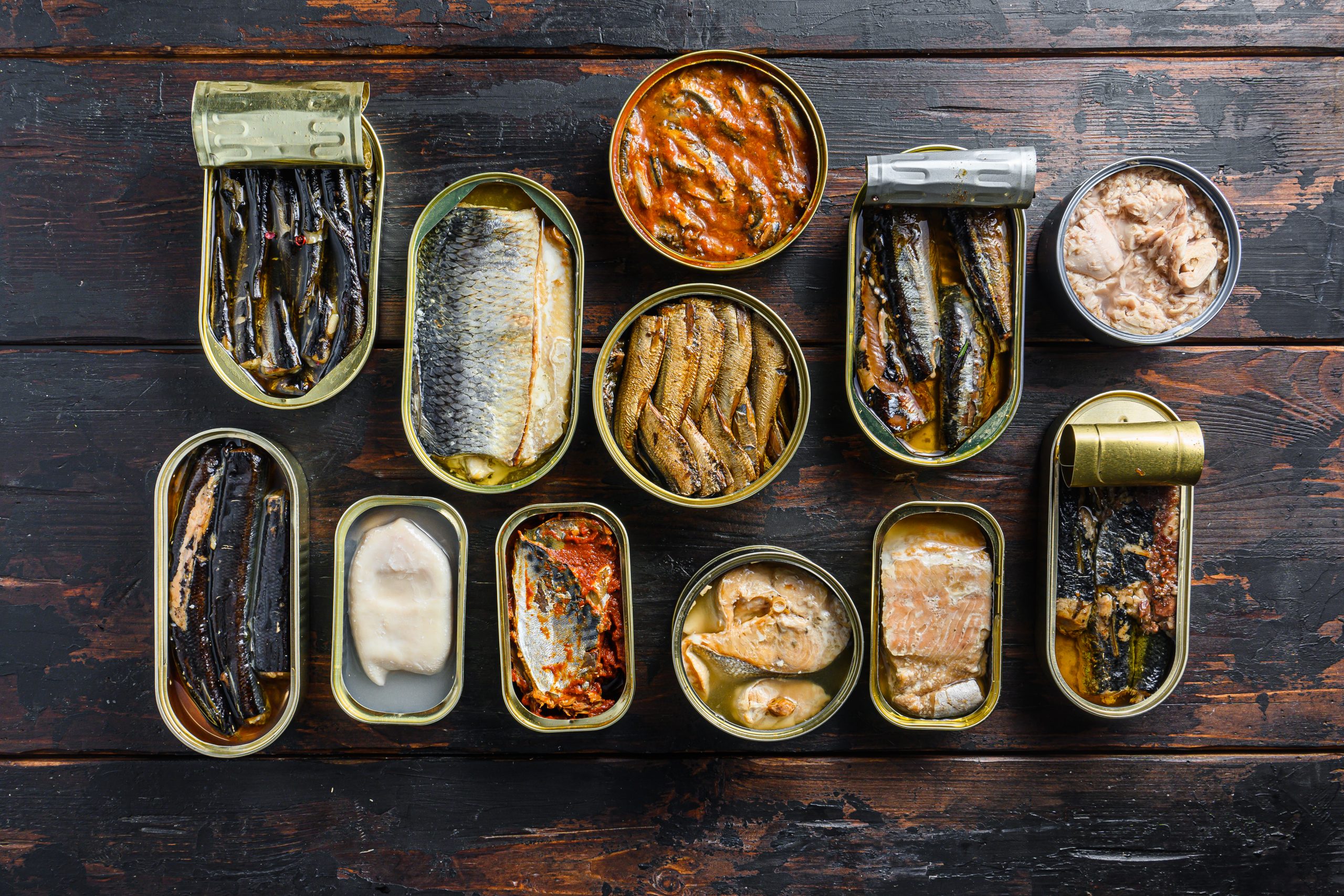You may find it quite perplexing that canned fish tastes different from its fresh counterpart. Well, prepare yourself for a journey of culinary discovery as we unravel the secrets behind this mysterious phenomenon. From the accessibility and convenience of canned fish to the intricacies of flavor profiles and different preparations, we will delve into the factors that contribute to the distinct taste of canned fish. So, get ready to satisfy your curiosity and uncover the fascinating reasons behind the peculiar taste disparity.
Taste and Texture Differences
When comparing fresh sardines to canned sardines, there are distinct taste and texture differences that can be observed. Fresh sardines have a sweeter, milder taste compared to canned sardines. They also have a firmer texture, providing a more satisfying bite. On the other hand, canned sardines can be packed in different flavorful liquids such as tomato sauce, olive oil, or brine, which can enhance their taste. Additionally, canned sardines can come smoked or salted, adding unique flavors to the fish.
In terms of cooking techniques, fresh sardines require cleaning and cooking, while canned sardines are ready to eat. Fresh sardines can be prepared using various methods like grilling, baking, or pan-frying, allowing for more versatility in flavor profiles. On the other hand, canned sardines are a convenient ingredient that can be added to dishes without any additional cooking required. They can be used to enhance the flavor of salads, pasta dishes, or even spread onto toast.
To summarize, the taste and texture differences between fresh and canned sardines are significant. Fresh sardines offer a sweeter, milder taste and a firmer texture, while canned sardines provide the convenience of different flavor options and ready-to-eat convenience. The choice between fresh or canned sardines ultimately depends on personal preference and the desired culinary outcome.
Accessibility and Convenience
Canned sardines offer accessibility and convenience for those seeking a quick and easy way to incorporate seafood into their meals. Here are three reasons why canned sardines are a popular choice:
- Affordability and Convenience: Canned sardines are a budget-friendly option, providing an affordable source of protein and omega-3 fatty acids. They are readily available in grocery stores and can be stored for long periods, making them a convenient pantry staple.
- Nutritional Content: Canned sardines are packed with essential nutrients such as vitamins D and B12, calcium, and omega-3 fatty acids. They offer comparable nutritional benefits to fresh sardines, making them a healthy choice for those looking to boost their intake of these nutrients.
- Sustainability Factors: Canned sardines often use smaller fish that may not be suitable for fresh consumption, contributing to sustainable fishing practices. By choosing canned sardines, you can support the use of these lesser-known, abundant fish species and help reduce overfishing of larger, more popular fish varieties.
Whether you prefer the convenience, affordability, or sustainability of canned sardines, incorporating them into your meals is a practical way to enjoy the benefits of seafood. Experiment with different cooking techniques and flavors to enhance their taste and make them a delicious addition to your diet.
Flavor Profiles
Fresh sardines and canned sardines have distinct flavor profiles that differentiate them from one another. The flavor of fresh sardines is characterized by a sweeter and milder taste compared to canned sardines. This is due to the preservation process and the impact of packaging on taste. Canned sardines often have a salty flavor, as they are typically packed in brine or oil. The packaging can contribute to the overall taste of the fish by infusing it with the flavors of the liquid it is packed in.
Additionally, the role of additives in canned fish flavor cannot be overlooked. Manufacturers may add seasonings, such as herbs, spices, or even tomato sauce, to enhance the taste of canned sardines. These additives can significantly alter the flavor profile of the fish.
To further enhance the taste of canned fish, various seasonings can be used. Citrus juices or tomatoes can help balance out the brininess, while experimenting with different herbs and spices can add depth and complexity to the flavor.
It is also worth noting that the taste of different canned fish varieties varies. Some may have a stronger fishy flavor, while others may be milder. The type of fish used and the processing methods employed can contribute to these variations in taste.
Different Preparations
Different preparations methods can significantly impact the taste and texture of sardines, whether they are fresh or canned. Understanding the various cooking techniques, seasoning options, and recipe ideas can help you make the most of your sardine preparation. Here are three important considerations:
- Cooking techniques: When it comes to fresh sardines, grilling or pan-searing can enhance their natural flavor and create a delicious crispy texture. On the other hand, canned sardines are already cooked and ready to eat, making them a convenient option for quick meals.
- Seasoning options: Both fresh and canned sardines can benefit from a variety of seasonings. Fresh sardines can be marinated with herbs, lemon juice, or garlic to enhance their flavor. Canned sardines often come packed in flavorful liquids like tomato sauce or olive oil, which can be used as a base for sauces or dressings.
- Storage methods and flavor enhancers: Fresh sardines should be stored in a cool environment and consumed within a few days to maintain their quality. Canned sardines, on the other hand, have a longer shelf life and can be stored in your pantry for a quick and easy protein source. To enhance the flavor of both fresh and canned sardines, you can experiment with additional flavor enhancers like capers, olives, or chili flakes.
Culinary Considerations
When considering the culinary aspects of sardines, it is important to take into account various factors that can influence the taste and preparation of this versatile seafood. Cooking techniques play a significant role in enhancing the flavor of canned sardines. Grilling or pan-searing can add a delightful smokiness, while incorporating acidic ingredients like citrus or tomatoes can balance out the brininess and make the fishy taste less aggressive. Experimenting with different seasonings and flavors can also help improve the overall taste experience.
Shelf stability is another crucial factor to consider. Canned sardines are cooked at high heat and hermetically sealed, which allows for extended shelf life. The cooking process ensures that the fish is safe from spoiling, making canned sardines a convenient and long-lasting option.
There can be variations in taste among different types of canned sardines. Tinned tuna, for example, is known for its strong smell and stinky funk due to pre-cooking. On the other hand, smaller fish like sardines usually have a milder taste and do not possess the same strong odor. Additionally, the choice between oil-packed or water-packed canned sardines can also affect the flavor. Oil-packed sardines generally have a stronger, slightly fishier taste.
When it comes to nutritional content, canned sardines offer comparable amounts of protein and essential nutrients as fresh sardines. However, it is important to note that canned sardines may have higher levels of sodium. If monitoring salt intake is a concern, fresh sardines may be a better option.
Quality and Sourcing of Tinned Fish
To understand the quality and sourcing of tinned fish, it is important to delve into the production and procurement processes involved. Here are three key factors to consider:
- Sourcing challenges: The availability and sustainability of fish can pose significant challenges for tinned fish manufacturers. Overfishing and environmental concerns make it crucial to source fish responsibly and ensure that fishing practices are sustainable.
- Sustainable options: When it comes to tinned fish, there is a range of options available, from premium to cheap. Premium tinned fish often comes from well-managed fisheries that prioritize sustainability. On the other hand, cheaper options may involve imported fish from less regulated sources, raising concerns about environmental impact and quality control.
- Local vs. imported: The choice between local and imported tinned fish can also impact quality. Local options often involve fish that are caught and processed nearby, ensuring freshness and supporting local economies. Imported options, while sometimes cheaper, may face longer transportation times, potentially affecting taste and texture.
Quality control is another crucial aspect of tinned fish production. Manufacturers must ensure that their products meet standards for taste, texture, and safety. This involves rigorous testing and monitoring throughout the production process to ensure consistent quality in every tin. By understanding the sourcing challenges, sustainable options, and quality control measures, consumers can make informed choices when purchasing tinned fish.
Processing and Cooking Methods
Now let’s examine the processing and cooking methods used in the production of tinned fish, as this plays a crucial role in ensuring the quality and taste of the final product. Tinned fish processing involves several techniques and preserving methods to maintain the flavor and shelf stability. A table is provided below to summarize the processing and cooking methods used in tinned fish production:
| Processing Method | Cooking Technique | Preserving Method |
|---|---|---|
| Tinning first, then | Raw pack method | Hermetic sealing |
| cooking under pressure | ||
| Pre-cooking (common | Pre-cooking method | Hermetic sealing |
| with large fish like | ||
| tuna) | ||
| Packed in oil | Hermetic sealing | |
These methods ensure that the fish is cooked at high heat and hermetically sealed, preventing spoilage and maintaining shelf stability. However, overcooking the fish before canning can result in a strong taste and smell. Tinned fish packed in oil generally has a stronger, slightly fishier flavor compared to other preserving methods. To address the fishy taste, adding acidic ingredients like citrus or tomatoes can help balance out the brininess. Additionally, experimenting with different seasonings and cooking techniques like grilling or pan-searing can enhance the flavor of tinned fish. It’s important to note that variations in taste can also arise from the type of fish used and personal preferences. By carefully applying these processing and cooking methods, manufacturers can produce tinned fish with a desirable taste and quality.


